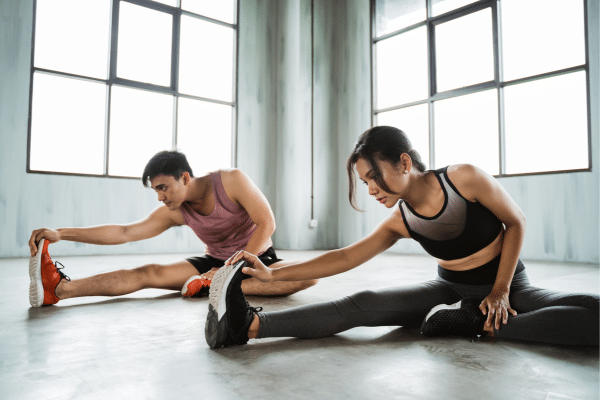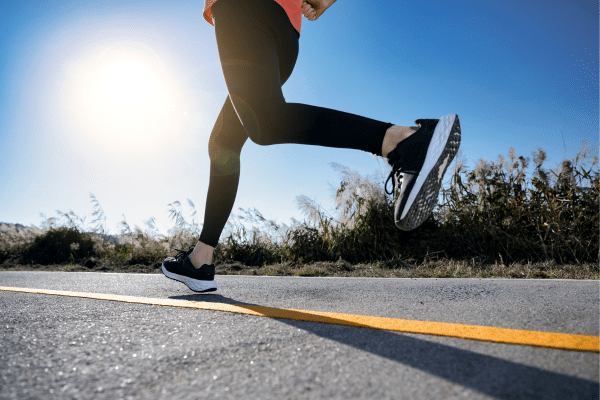Maintaining a proper post-workout routine is as crucial as the workout itself. Often, the focus is on the exercises, neglecting what comes after. This blog post dives into the common mistakes made after exercising, shedding light on practices that can hinder progress and cause harm. From skipping essential stretches to the misconceptions about hydration and nutrition, each section uncovers the dos and don’ts of post-workout care. Understanding these pitfalls is the first step towards optimizing recovery, enhancing performance, and ensuring overall well-being.
Contents
Skipping Stretching

Stretching after a workout isn’t just a cool-down ritual; it’s a critical component of any fitness routine. It aids in gradually lowering the heart rate, promoting circulation, and preventing lactic acid buildup, which can lead to muscle soreness. Moreover, stretching enhances flexibility, an essential aspect of fitness that contributes to a range of motion and reduces the risk of injuries during future workouts. Dismissing this crucial step can lead to stiff muscles and negate some of the hard-earned progress from the workout session.
However, the benefits of post-workout stretching go beyond the physical. It provides a moment to reflect on the completed workout, acknowledge personal achievements, and mentally transition from the high intensity of exercise to the calm of regular activities. Skipping this phase can result in a missed opportunity to develop a mind-body connection, which is instrumental in recognizing personal limits and setting realistic fitness goals. Therefore, integrating stretching into the post-workout routine is not just beneficial but necessary for a holistic approach to fitness and well-being.
Overeating

The body’s energy stores are depleted after a strenuous workout, leading to a natural increase in hunger. However, succumbing to the temptation of overeating can counteract the hard work and discipline invested in the workout. It’s essential to replenish the body with the right nutrients in appropriate portions. Consuming a balanced meal or snack that includes proteins, healthy fats, and carbohydrates aids in muscle repair and replenishes energy without leading to unwanted weight gain.
Understanding the difference between actual hunger and the psychological desire to eat as a form of reward after exercising is crucial. Mindless eating or choosing unhealthy foods can quickly lead to consuming more calories than were burned during the workout, rendering the effort futile in terms of weight management or body composition goals. Instead, planning post-workout meals or snacks in advance ensures that the choices align with fitness and health goals, providing the body with the nourishment it needs to recover and build strength.
Neglecting Hydration

Hydration is paramount for the body’s recovery and overall function, especially after exercise. During physical activity, the body loses fluids and electrolytes through sweat, and replenishing these is crucial to prevent dehydration. Dehydration, even in a mild form, can impair the body’s ability to regulate temperature, reduce performance, and prolong muscle recovery. Ensuring proper hydration supports metabolic functions, aids in nutrient absorption, and helps in maintaining optimal blood volume and pressure.
However, hydrating isn’t just about drinking water; it’s about understanding the body’s needs and responding accordingly. This means not only replacing lost fluids but also restoring electrolytes like sodium, potassium, and magnesium, which are crucial for muscle function and energy production. Sports drinks can be beneficial in this regard, especially after prolonged or intense exercise. But it’s also important to avoid overhydrating, which can lead to an imbalance in sodium levels, a condition known as hyponatremia. Monitoring urine color is a practical way to gauge hydration status, aiming for a pale yellow color as an indicator of proper hydration.
Inappropriate Physical Activity

Immediately following a workout, the body is in a state of recovery, making it the least ideal time for additional strenuous activities. Engaging in high-intensity tasks can negate the benefits of the workout, leading to overexertion and increased risk of injury. The body needs this crucial period for repairing and strengthening muscles. Instead of jumping into another physically demanding chore or exercise, it’s advisable to indulge in light activities like walking or gentle stretching. This approach not only aids in cooling down the body but also promotes blood circulation, which is vital for transporting nutrients to the muscles and removing waste products.
Ignoring the body’s need for a proper cooldown can have adverse effects on the heart and muscles. Abruptly stopping physical activity without a gradual decrease can cause blood to pool in the larger muscles, potentially leading to dizziness or fainting. Furthermore, skipping this essential phase of the workout routine can result in increased muscle stiffness and soreness the following day. Recognizing the importance of proper cooldown and giving the body time to transition back to its resting state is crucial for long-term health and fitness sustainability.
Skipping Post-Workout Shower

Foregoing a shower after intense physical activity can lead to more than just unpleasant body odor; it can be a catalyst for various hygiene-related issues. Sweat, when left to dry on the skin, can clog pores and lead to acne breakouts. Moreover, the warm, moist environment created by sweaty clothes is an ideal breeding ground for bacteria and fungi, raising the risk of skin infections like athlete’s foot and jock itch. Taking a shower not only cleanses the skin but also offers a refreshing transition from the intense mode of exercising to a state of rest and recovery.
In addition to the physical benefits, a post-workout shower can have psychological benefits. The act of showering can signify the end of the workout, providing a clear boundary between the time dedicated to exercise and the rest of the day’s activities. This can help in mentally transitioning from the high-energy state of exercise to a more relaxed and calm state, aiding in stress reduction and promoting overall well-being. Therefore, incorporating a shower into the post-workout routine is not only beneficial for hygiene but also for mental health.
Consuming Alcohol

Opting for alcoholic beverages after a workout might seem like a tempting way to unwind, but it can be detrimental to the recovery process. Alcohol dehydrates the body, interferes with the absorption of nutrients, and can inhibit protein synthesis, all of which are crucial for muscle repair and growth. Additionally, alcohol can disrupt sleep patterns, preventing the body from entering the deep sleep stages necessary for optimal recovery and muscle building. While the immediate relaxing effects of alcohol might be appealing, they come at the cost of impeding the body’s healing process after physical exertion.
Moreover, alcohol can impair judgment and reduce willpower, potentially leading to unhealthy eating choices that contradict the fitness goals set by the individual. The calories in alcoholic beverages, often referred to as ’empty calories,’ provide little to no nutritional benefit and can contribute to unwanted weight gain. For those committed to maintaining a healthy lifestyle and optimizing their fitness results, it’s advisable to seek alternative ways to relax and unwind after a workout, such as meditation, reading, or a leisurely walk.
Ignoring Pain Or Discomfort

Discomfort and mild fatigue might be common after a workout, but it’s crucial to differentiate between these expected sensations and the pain that signals a potential injury. Ignoring pain or dismissing it as a normal part of exercising can lead to severe injuries, prolonged recovery times, and even permanent damage. Paying attention to the body’s signals and understanding the difference between muscle fatigue and pain can prevent minor issues from escalating into major health problems. Recognizing when to push through and when to pull back is a critical skill that can safeguard health and ensure the longevity of one’s fitness journey.
Seeking professional advice when experiencing unusual or persistent pain is not a sign of weakness but a wise approach to personal health care. Health professionals can provide valuable insights, recommend appropriate treatments, and tailor recovery plans that align with individual fitness levels and goals. This proactive approach not only addresses the immediate concern but also educates individuals on how to prevent future injuries, ensuring a safer and more effective path to achieving their fitness aspirations.
The Bottom Line
The period following a workout is a critical time for the body, demanding practices that promote recovery, prevent injury, and align with long-term health and fitness goals. From stretching and proper nutrition to hydration and hygiene, each post-workout practice plays a pivotal role in shaping the overall fitness journey. Acknowledging the importance of these practices and integrating them into the daily routine can significantly enhance workout results, prevent health issues, and foster a sustainable, balanced approach to fitness and well-being. Remember, the efforts put into post-workout care are just as crucial as the workout itself.


